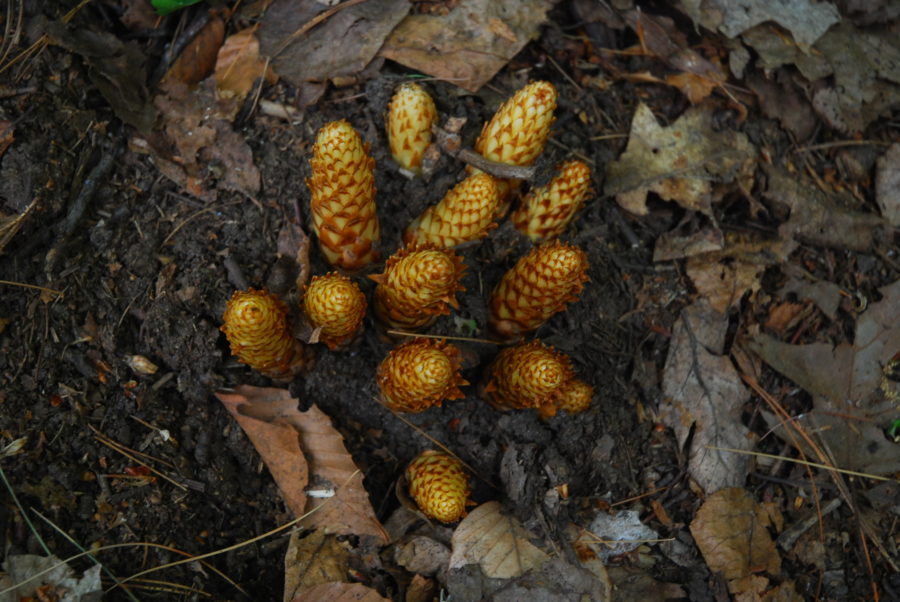Today’s post comes from Maddie Bray, a naturalist at Awenda Provincial Park.
As park naturalists, we get asked all sorts of questions about various organisms that live within the park. Campers will describe the call of a bird they didn’t quite see or the colouring of an insect that was just too quick to photograph.
One of these questions in particular always seems to come up in the summertime – what are those pale yellow things sticking up out of the ground?
Is it a fungus? Rotting cobs of corn? Yellow pine cones?
Believe it or not, this is actually a wildflower! It belongs to a parasitic plant known as Conopholis americana.

Depending on who you ask, there are different common names for this plant, including American Cancer-Root and Bear Corn, but we at Awenda Provincial Park tend to just call it Conopholis.
The key feature of these plants is the complete and utter lack of green that we see on most other plants.
Quite the “para-sight!”
Unlike its distant relatives, Conopholis (and other plants closely related to it) gets its nutrients not from the sun, but from the plants around it, leeching water-soluble nutrients from the roots of its host. It is an obligate parasite that cannot grow without its host plant nearby.

Conopholis is specialized to parasitize oaks, most commonly a Red Oak (Quercus rubrum). Seedlings cannot develop without the presence of young, vulnerable oak roots near the surface of the soil to latch onto.
The main body of the plant is subterranean, latched onto a root to gather nutrients. The flowers are the only parts of the plant that break through the surface of the soil, coming up in finger-like protrusions in late May or early June.
After the plant’s identity is revealed, there is always another question…
Are these plants killing the oak trees?
No! These are generally quite small perennial plants that only live for around 10 years. Compared to the decades or centuries that could make up the lifespan of a healthy Red Oak, that’s nothing!
A single host can be attacked by these parasites for many generations and not experience any real deleterious effects.

These fruits and the seeds within can be dispersed over long distances with the assistance of White-Tailed Deer, but they can’t grow without an oak nearby.
Conopholis americana is not a particularly common plant, but it is certainly noticeable throughout the forest encompassing most of Awenda, thanks to the relative abundance of Red Oak hosts.
Swing by Awenda Provincial Park any time between June and August to see these unusual plants.
Not every wildflower needs to be pretty to be cool!
